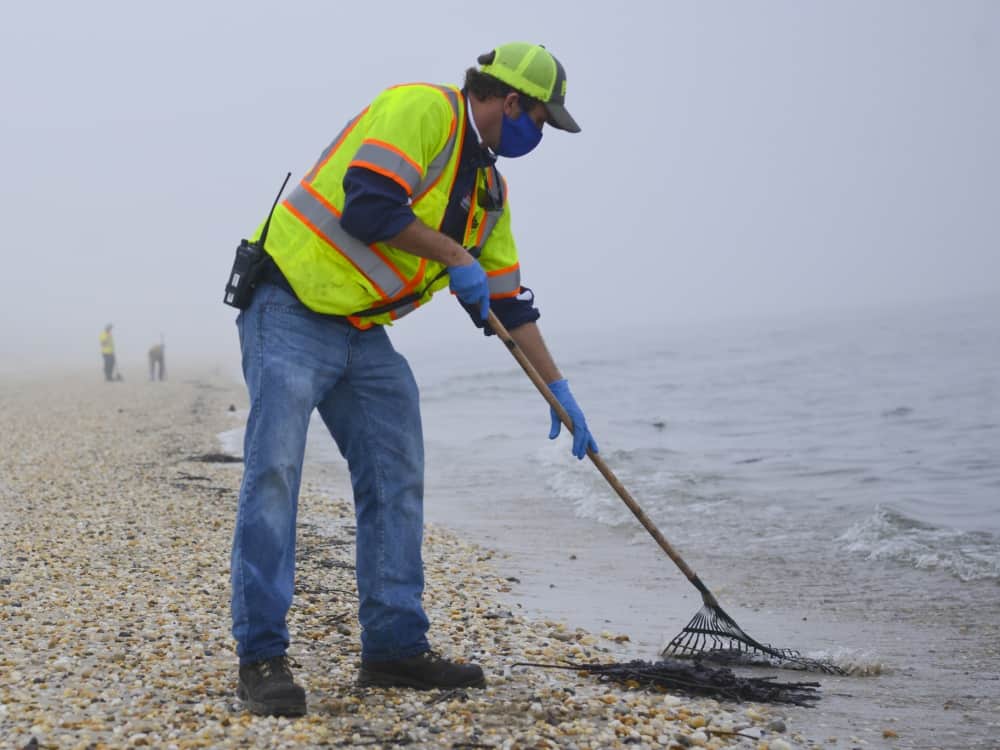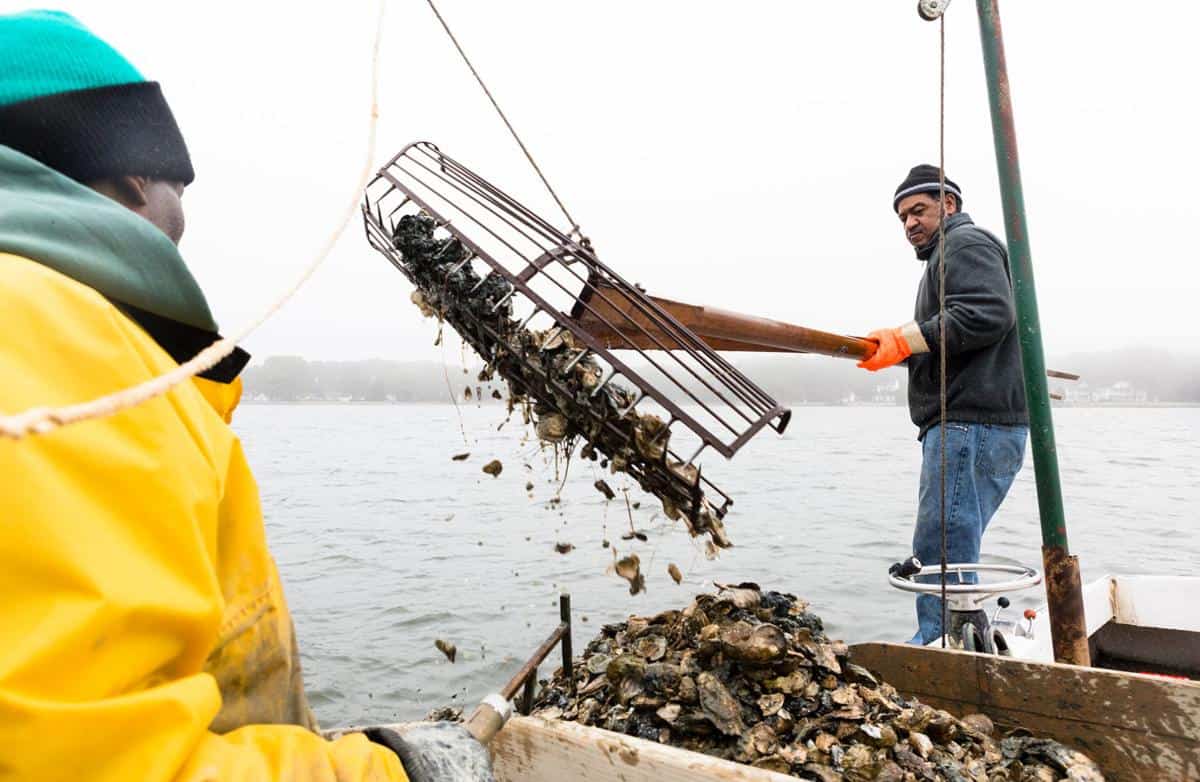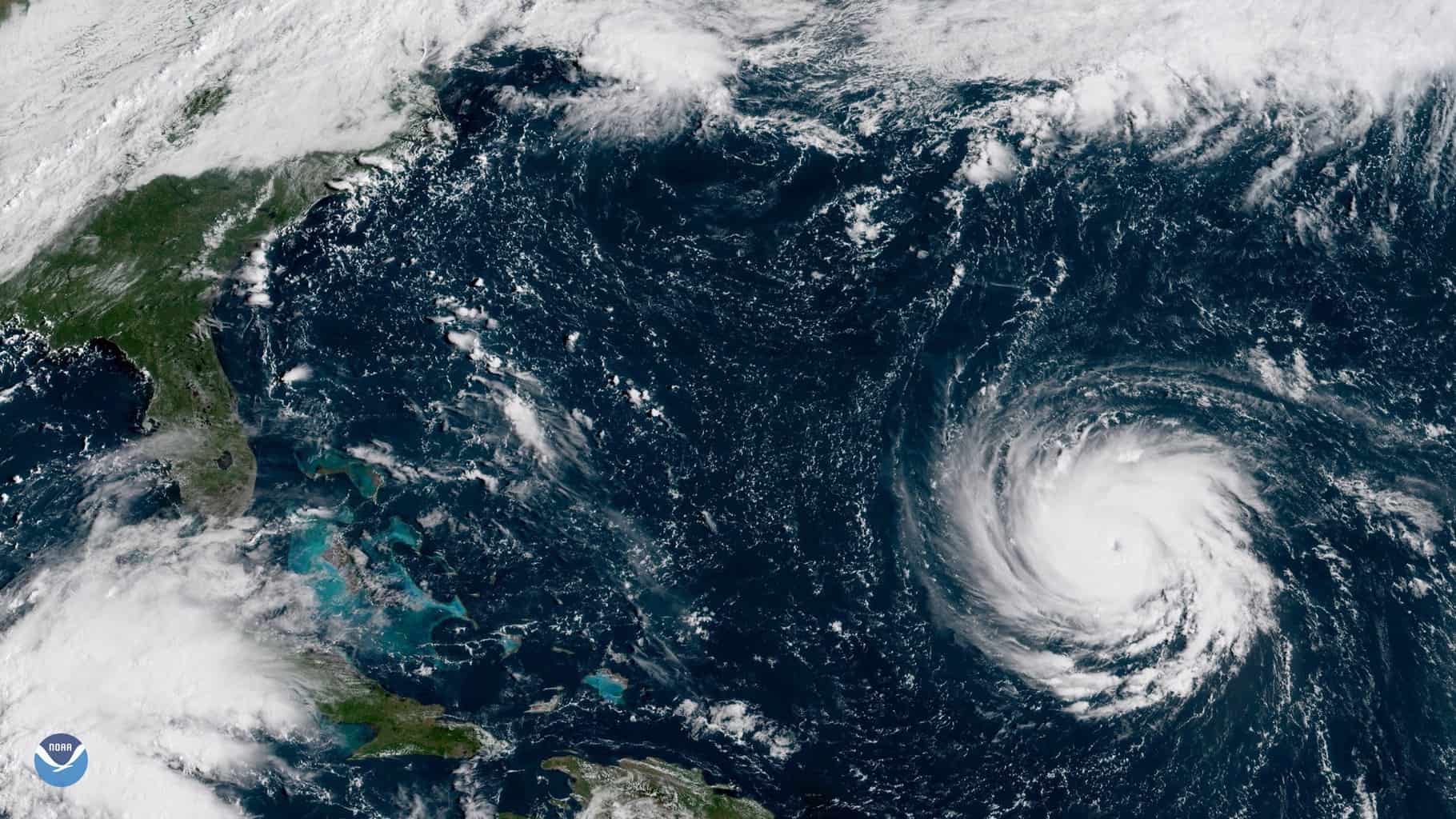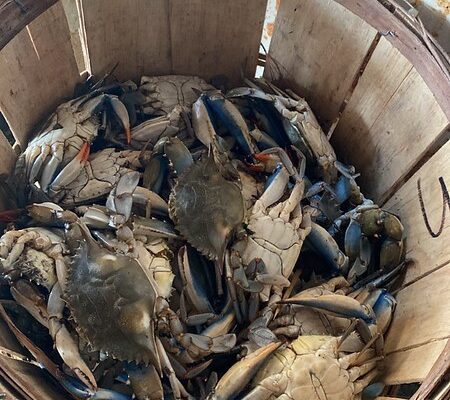The oil spill that sent tar balls and oily debris onto 11 miles of Delaware beaches is prompting a huge cleanup effort, and on Wednesday morning we learned it has reached Ocean City, Maryland.
More than 100 crew members per day, from the Coast Guard, Delaware Natural Resources and Environmental Control (DNREC), and other partners, are working from the upper Delaware Bay to popular ocean beaches like Dewey, Rehoboth, Bethany. and now, Ocean City.
The scale of the cleanup has become significantly larger since the spill was first discovered last Monday. As of Tuesday evening, the amount of oily sand and debris removed from the coastline had reached 65 tons.
Concerns for wildlife are mounting, too, as 66 oiled birds have been identified so far. Tri-State Bird Rescue in Newark, Del. specializes in oil-stricken birds. The avian rescue was founded in 1976 after a series of five oil spills on the Delaware River, when thousands of animals died. According to its website, founder Lynne Frink “vowed to never let this tragedy happen again.”
Tri-State staffs a professional 24-hour oil spill response management team. DNREC says Tri-State is playing “a key role in the cleanup coalition, investigating reports of wildlife impacted by oil and treating captured sea gulls and other wildlife that has been oiled in the water.”
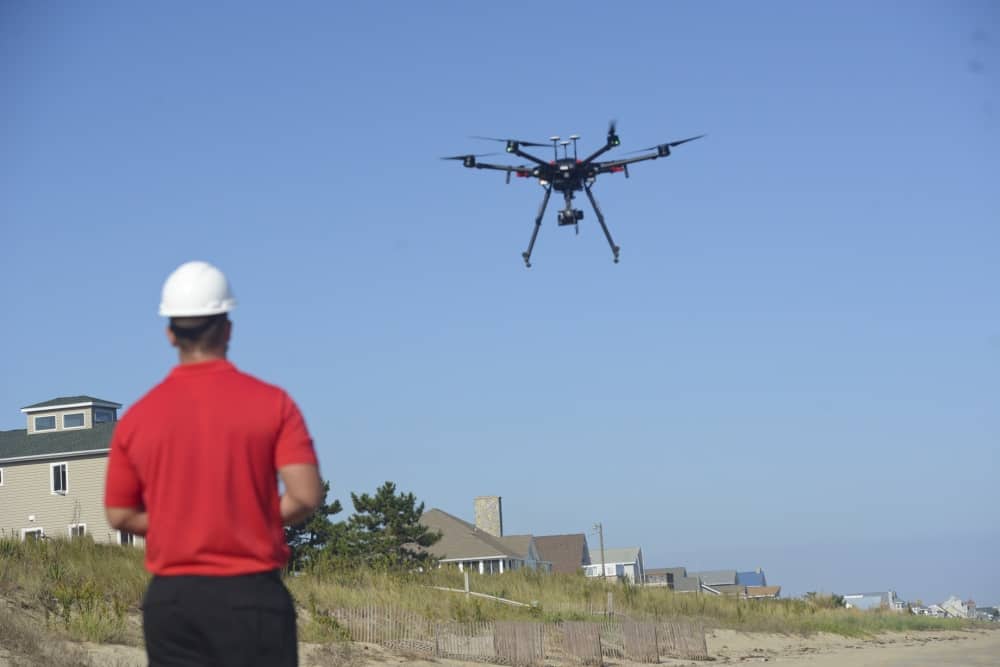
Meanwhile, The Delaware Bay and River Cooperative, a non-profit funded by industry in the event of an oil spill, has dispatched an oil skimming vessel to remove oily debris seen afloat in the water. A special oil-sensing drone is being used to identify pollution. It has a polarized long-wave infrared sensor to find oil-based products.
“We continue to mobilize our expert resources as the tides spread oil from the beaches back into the water and back on the beach,” said DNREC Secretary Shawn Garvin. “We are combing the beaches and, shovel by shovel, removing the tar balls and contaminated sand.”
The Coast Guard says the ongoing effects all stem from the original oil spill, and do not believe there is an ongoing or undiscovered patch of oil out in the bay or ocean. They haven’t ruled out any possible sources. They’re still waiting for the Marine Safety Laboratory to analyze samples for a petroleum fingerprint to help determine the source. If one is found, the responsible party would have to reimburse the federal government for the cleanup.
An information advisory was extended from Delaware Bay beaches to include ocean beaches down to the Inlet. Lewes, Dewey, and Bethany closed their beaches, and notices have been posted in the neighborhoods and at beach access points in Rehobeth Beach warning people and pets not to go near the oil globs.
“Our crews and technology are yielding positive results,” said USCG Lt. Cmdr. Fredrick Pugh, federal incident commander for the response. “We’re seeing a lot of this pollutant coming off of our beaches by the ton and that feels like a high level of productivity, but we’re not letting up. These communities need [their] beaches back.”
DNREC and USCG “strongly advise the public not to handle any oily product found or attempt to assist affected wildlife along the shore, but to report these findings to DNREC’s environmental hotline at 800-662-8802 so the situations can be addressed by hazmat-trained professionals.”
-Meg Walburn Viviano

